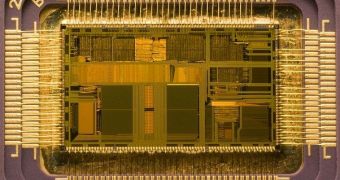In an important, new finding that could lead to the development of faster optical information processing and more compact computers, physicists at the University of Toronto managed to detect a new type of behavior in photons. These are the elementary particles that make up light, and the UT group learned that they tended to exhibit a very strange, previously unstudied behavior when trapped inside photonic crystals. The science team was led by quantum optics researchers Sajeev John and Xun Ma.
“We discovered that by sculpting a unique artificial vacuum inside a photonic crystal, we can completely control the electronic state of artificial atoms within the vacuum. This discovery can enable photonic computers that are more than a hundred times faster than their electronic counterparts, without heat dissipation issues and other bottlenecks currently faced by electronic computing,” Ma, who is a UT PhD student working under John's directions, says.
The doctoral student is also the lead author of a new paper detailing the finds that the team published in a recent issue of the respected scientific journal Physical Review Letters. “We designed a vacuum in which light passes through circuit paths that are one one-hundredth of the thickness of a human hair, and whose character changes drastically and abruptly with the wavelength of the light. A vacuum experienced by light is not completely empty, and can be made even emptier. It's not the traditional understanding of a vacuum,” John adds.
The researcher says that the state of each individual atom in the vacuum – which can be considered to be a quantum bit, or qubit – can be individually controlled using an advanced, color-coded stream of laser pulses. The lasers basically excite and de-excite the atoms several trillionths of times per second. The thing is that the qubits can in turn control other streams of optical pulses. This is, in effect, the foundation of an optical network, the team says.
“This new mechanism enables micrometer scale integrated all-optical transistors to perform logic operations over multiple frequency channels in trillionths of a second at microwatt power levels, which are about one millionth of the power required by a household light bulb. That this mechanism allows for computing over many wavelengths as opposed to electronic circuits which use only one channel, would significantly surpass the performance of current day electronic transistors,” John says.
The new research, published on December 3 in a paper entitled “Ultrafast Population Switching of Quantum Dots in a Structured Vacuum,” was conducted using funds from the Natural Sciences and Engineering Research Council of Canada, the Canadian Institute for Advanced Research, and the Ontario Premier's Platinum Research Fund.

 14 DAY TRIAL //
14 DAY TRIAL //